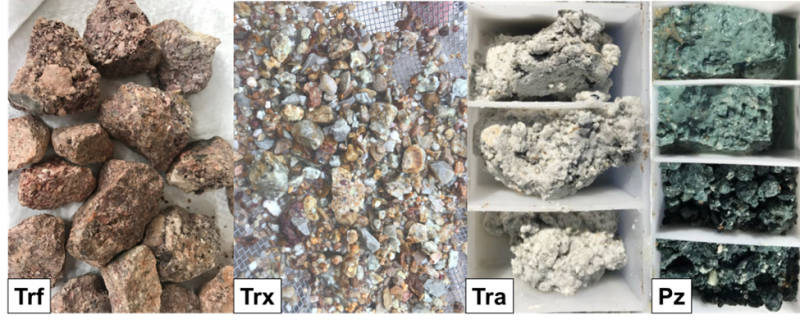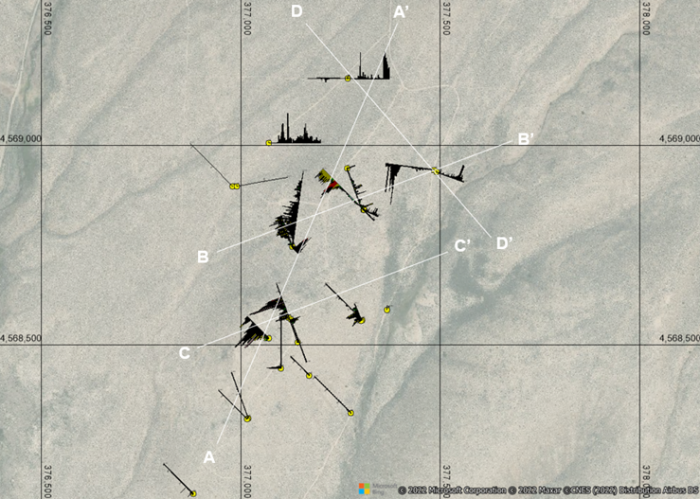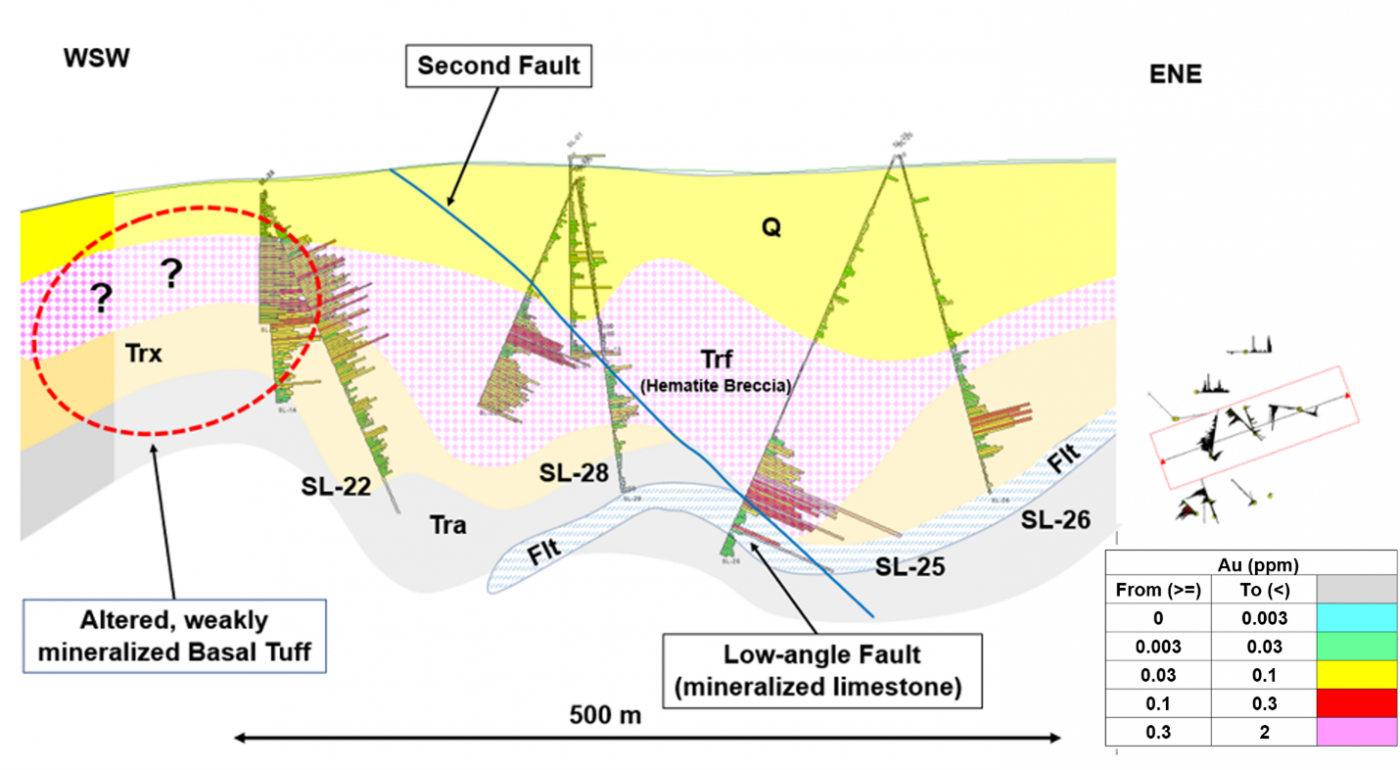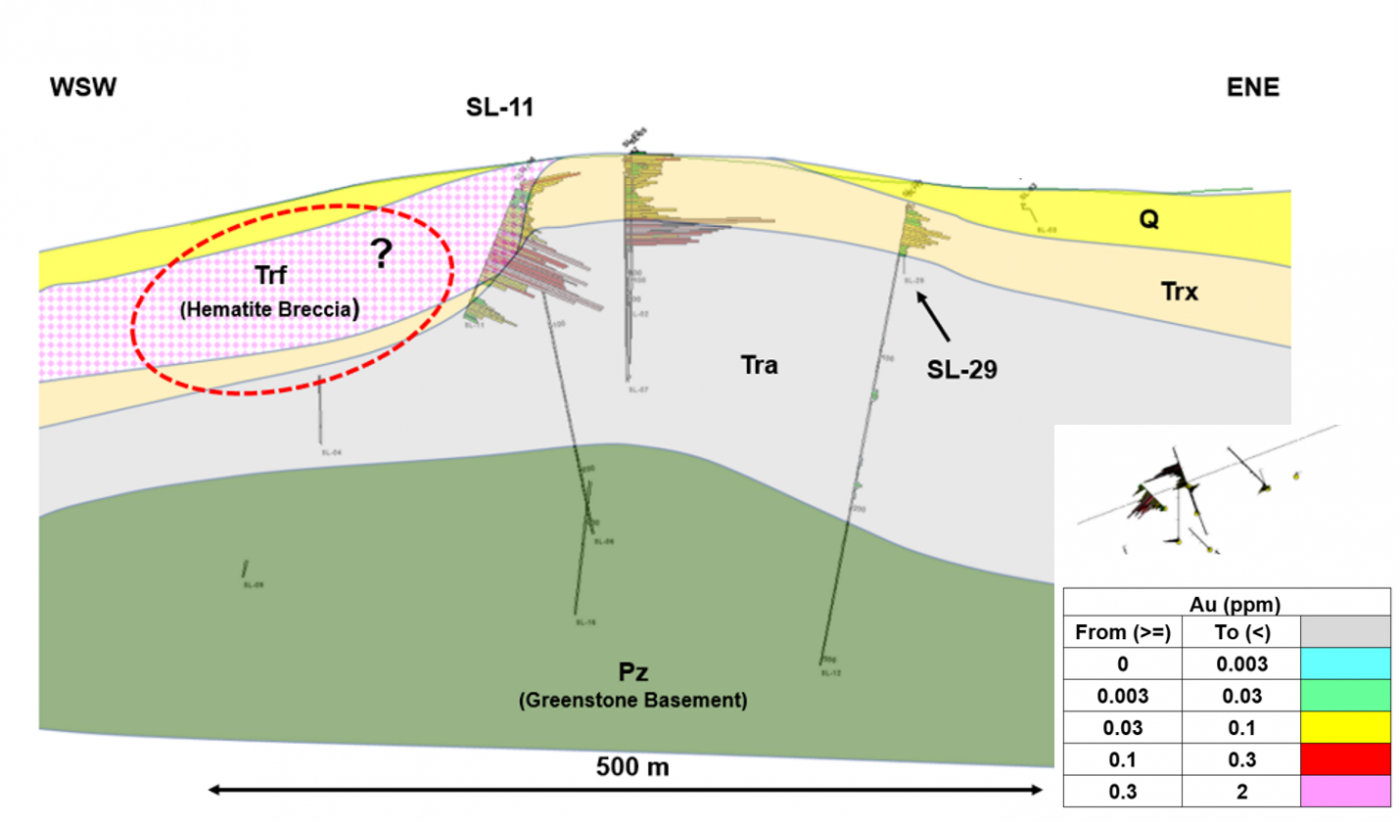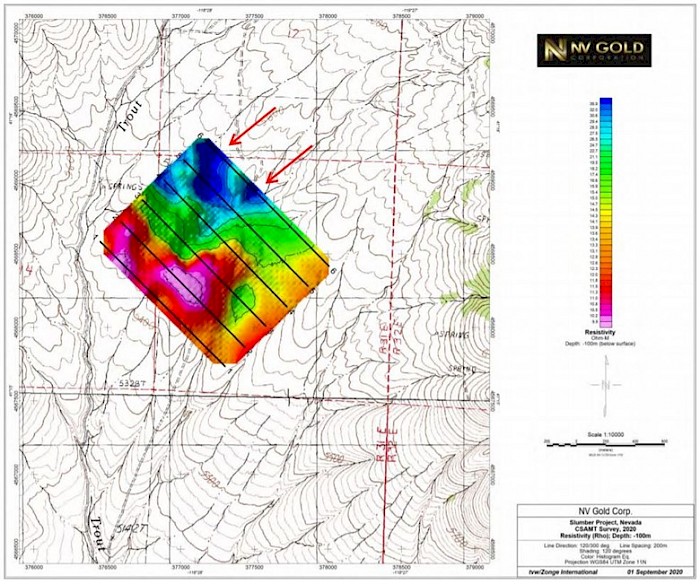Location
NV Gold’s 100%-owned Slumber Gold Project (“Slumber”) is located approximately 80.5 kilometers (50 miles) northwest of Winnemucca and 35 kilometers (21.7 miles) west of the Sleeper gold deposit, Humboldt County, Nevada, USA (see Figure 1).
The Property, comprising 85 lode mining claims, is also situated in a strategic neighborhood to Argonaut’s Florida Canyon low-grade gold operation.
Figure 1: Location of Slumber project and nearby active and inactive mining operations.
Deposit Type & Geology
Slumber is volcanic-hosted epithermal gold (and low silver) mineralization found in a structural corridor along the southern Jackson Mountains. Interpreted graben-like structures controlling silicification and minor quartz veining in volcanic and sedimentary rocks.
The lithological package consists of (see Figure 2):
- Flow-banded Rhyolite Domes (Tr) (up)
- Rhyolite Flows/Breccia (Trf)
- Lithic Tuff (Trx)
- Basal Tuff (Tra)
- Paleozoic Greenstone (Pz). (down)
The main host rocks are of rhyolitic composition (Trf, Trx & Tra) underlain by fresh to weakly altered Paleozoic Greenstone (Pz) (see Figure 2).
Most of the gold mineralization occurs in hematite breccia (Trf) and the underlying silicified lithic tuff zone (Trx), gold values can increase when intercepted by quartz veining. Important to know that drilling has also encountered displaced decalcified, gold-bearing (up to 0.64 g/t Au) carbonate rock in low-angle structures, which suggests that there can be more targets within the area as expected!
Figure 2 - Rock types at Slumber (Trf and Trx are the main host rocks for gold, while Tra can be weakly gold anomalous, and Pz is mostly barren).
Drilling
Three drill campaigns have been conducted between August 2019 and early 2022; 29 RC holes (reverse circulation) were completed, totaling 5,200.9 m (17,063.3 ft).
The first two drilling campaigns focused on a “Sleeper-like” model and targeted a small, silicified, and mineralized area in the middle part of the Property. However, the early drilling did not meet the desired high-grade structure but intercepted some zones of low-grade-oxide gold along the northern limits of the drilled area. In 2021 NV Gold did reinterpret this marginal zone of mineralized silicification by using older CSAMT data and a recently conducted IP survey to evaluate a wide-open resistivity zone and its correlation with gold mineralization to the north (see Figure 8 & 9). As a result, most of the 2021-2022 drill holes did meet significant thicknesses of low-grade-oxide gold distributed over an area of 800+ meters by 300+ meters with thicknesses more than 100-150 meters (see figures 3-7). Most holes are bottomed in gold mineralization, depth-limited by ongoing equipment challenges and ground water (see table 1).
Having concerns of lost and washed-out gold in sample fines, NV Gold is also considering re-drilling 1-2 of the RC holes with core!
Drill Intercepts:
Table 1 – Slumber 2019-2022 significant drill intercepts.
Figure 3 – Drill hole locations with gold intercepts and cross-sections.
Figure 4 – Cross-section A-A’ with gold intercepts on interpreted geology.
Figure 5 – Cross-section B-B’ with gold intercepts on interpreted geology.
Figure 6 – Cross-section C-C’ with gold intercepts on interpreted geology.
Figure 7 – Cross-section D-D’ with gold intercepts on interpreted geology.
Figure 8 – !00 Meter depth slice of CSAMT resistivity anomaly open to the north (blue color).
Figure 9 – Outline of mineral inventory and potential extension of mineralized zone (blue) on geology.
Figure 10 – Mercury vapor survey with five identified drill targets (A-E) with open outline of gold mineralization on topography.
Conclusions
NV Gold has successfully delineated a decent-sized, near-surface, oxide-gold mineralization on its Slumber property in Humboldt County, Nevada. The gold zone is very homogenous and continuous, and preliminary AuCN tests returned high gold recoveries. A 2021 Leapfrog model confirmed expectations to extend the known gold zone and to encounter higher grade gold values to the north. The gold system stays open in multiple directions and at depth, and most of the northern part of the Property and most of the southern part remain untested. However, having mostly gold values of around 0.2 g/t Au compels NV Gold to meet better grades and thicker intercepts! Recently received assays of up to 1.5 g/t Au in SL-27 are indicators that higher grades can be present in the area. Slumber is 80%+ covered by gravel and thick sagebrush vegetation, which made the Company decide to conduct a mercury vapor survey to find any leakage of a larger-sized, concealed gold-system. As a result, the mercury vapor survey has successfully identified five new untested zones (A-E) with potential for better gold grades under gravel cover (see Figure 10). Identifying the higher-grade feeder structures will be critical to enhance the Project to economic mining levels. The Company has already permitted 3 drill sites to follow-up on the mercury vapor targets, which are standing by to be drill-evaluated in mid to late 2023 depending on financing and drill rig availability.
Thomas Klein, VP Exploration stated, “I am excited to share the results of the past drilling campaigns and a recently completed mercury vapor survey at our Slumber Gold Project in Humboldt County, Nevada. The Company has discovered an extensive, near-surface, low-grade, oxide-gold blanket and detected five outstanding mercury vapor anomalies with values over 100 nanograms outside the zone of known gold mineralization (Figure 10). Knowing that mercury vapor can be the oxidation product of a gold-system at depth, the Company is planning to test some of the anomalies to prove the concept and to discover a concealed high-grade (Sleeper-like) gold system on the Property.”


